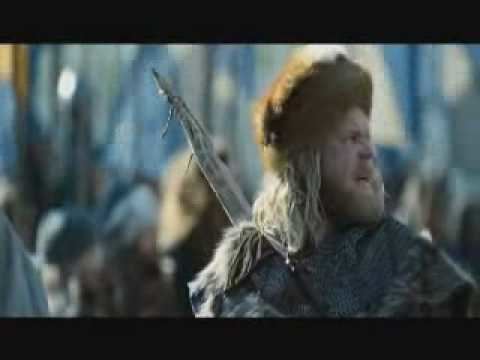Almost the whole army was destroyed Light Result Swedish victory | Date 31 January 1208 | |
 | ||
12,000 - 18,000 soldiers and knights 7,000 - 10,000 armed peasants Similar Battle of Gestilren, Battle of Älgarås, Battle of Hova, Battle of Bogesund, Battle of Helsingborg | ||
The Battle of Lena occurred on January 31, 1208, and probably took place near Kungslena (58°14′N 13°50′E), which is located in the Tidaholm Municipality in Västergötland, Sweden. It was an important battle between the Danish-backed former Swedish King Sverker II of Sweden and Prince Eric, resulting in the complete victory of the latter.
Contents
Battle of lena
Background
The period 1150-1250 saw a strong rivalry between the House of Sverker and House of Eric who alternated on the Swedish throne. The main representative of the House of Eric, Eric Knutsson, returned from exile in Norway in 1207-08. There were marital connections between his family and the Norwegian ruling elite, but the sparse sources do not tell if he was backed by Norwegian troops. Sverker II was forced to flee to Denmark where he had been raised before becoming king. All this suggests that a large part of the Swedish nobility rejected Sverker's rule.
His kinsman, the Danish King Valdemar the Victorious provided Sverker with auxiliaries, including a Czech contingent from Valdemar's father-in-law, the King of Bohemia. The bulk of the troops, however, were gathered by Sverker's in-laws, the powerful Sunesen brothers. The army was led by Ebbe Sunesen, brother of Archbishop Andreas Sunesen. Medieval traditions estimate the size of the force at 12,000 or 18,000, although these numbers might be vastly exaggerated. The defending Swedish force was, again according to later tradition, half of that of Sverker's forces, numbering between 7,000 and 10,000. It is often assumed that the Swedes were additionally backed up by a small number of Norwegian auxiliaries. However, it is hardly likely that Eric's ally Jarl Håkon Galen had troops to spare considering the internal troubles in Norway.
The battle
The invading army entered Västergötland in the middle of the winter. Frozen lakes and rivers may in fact have facilitated transportation of the troops. They met the adversary at Lena on 31 January 1208. No contemporary sources describe the battle in detail. We only know that the Danish troops suffered a crushing defeat, and that Ebbe Sunesen and his brother Laurentius were killed. The Icelandic Flateyarbók states that "Junker Eric slew Ebbe Sunesen", possibly implying a personal meeting on the battlefield. Knut Jarl of the House of Bjälbo was killed as well, probably on the Swedish side. Also killed in the melée was a Magnus, possibly Knut Jarl's brother Magnus Minniskiöld, father of Birger Jarl. Perhaps the Swedes used the winter weather to their advantage, as the Danish knights were slow and vulnerable in heavy snow.
Later Swedish and Danish tradition, while not reliable, bears witness of the impression that the cataclysmic battle made on posterity. A Swedish verse depicted the event as a plain battle between Sweden and Denmark: "It happened in Lena / Two Danes ran for one (Swede) / And from the Swedish men / Received a bad spanking on their backs". A Danish folksong emphasizes the sorry internal Swedish conditions, as kinsmen fought each other: "It was ill to stand in the fighting / As the son let his father down". A song alleges that no more than 55 men escaped the bloodbath and made it back to Denmark:
The ladies stand on the high balcony,They await their masters to arrive.The horses return bloodied,And the saddles are empty.The hand of Odin
The Swedes won, according to legend, aided by Odin. The Norwegian Saga of Inge Bårdsson relates that a horseman arrived to the farmstead of a smith at Nesje on 26 January, and stayed over night. The next morning the stranger baffled the smith through a display of supernatural powers, then said: "I have been to the north, and stayed in Norway for a long time, but I will now move over to Sweden." He then disclosed to the smith that he was Odin, spurred his horse, and jumped over a high fence out in the blue. Four days after this event, the Battle of Lena took place.
Aftermath
Among the few survivors was Sverker II who fled to Denmark. The Pope took interest in the cause of the fallen king and ordered Eric Knutsson to settle the matter and return kingship to Sverker. When Eric declined to meet these demands, Sverker returned from his Danish refuge with a new army. This second invasion ended with the Battle of Gestilren in July 1210. This time Sverker himself was killed, an event that secured the throne for King Eric.
